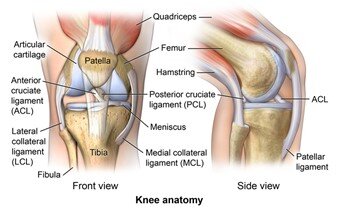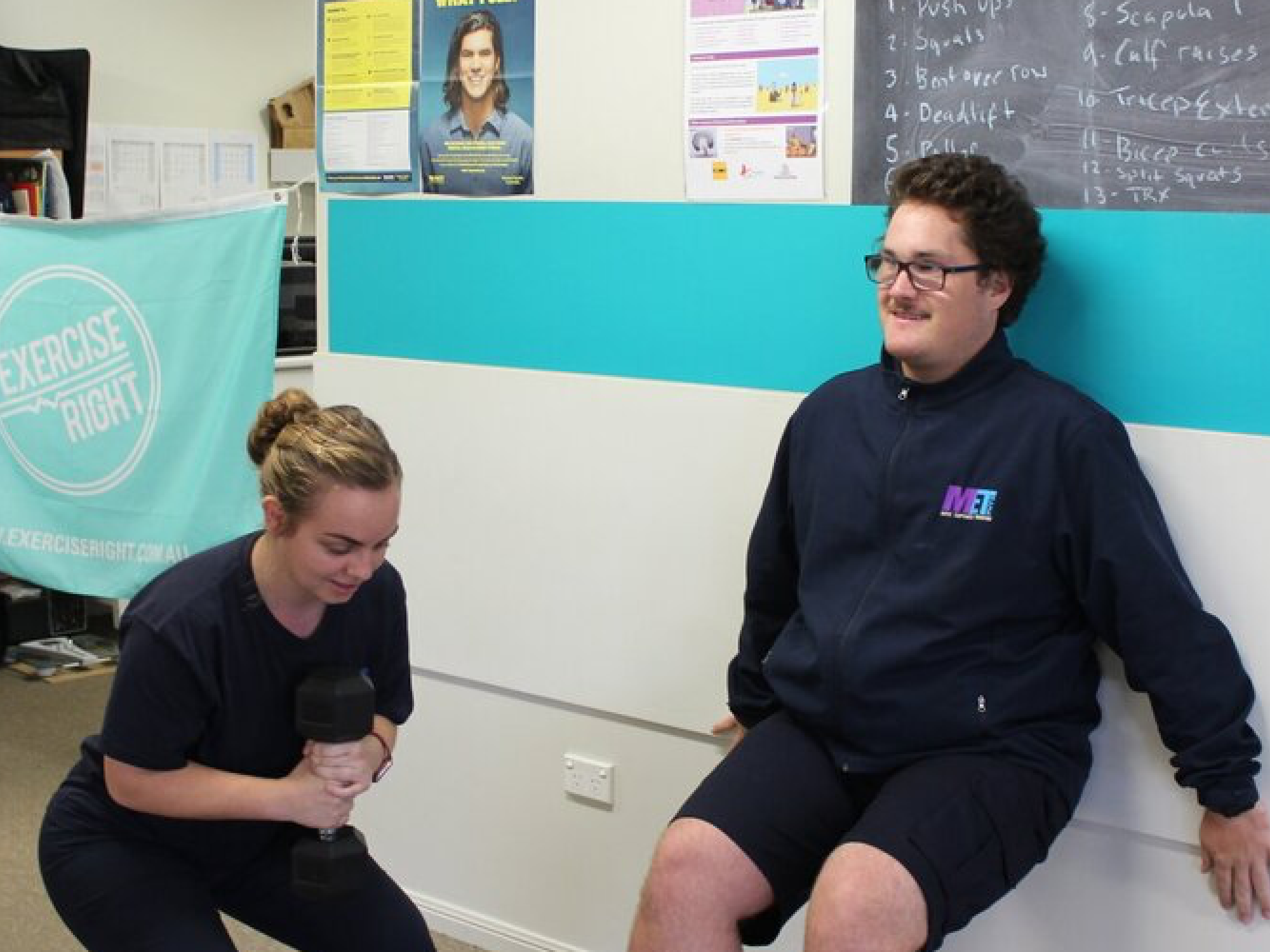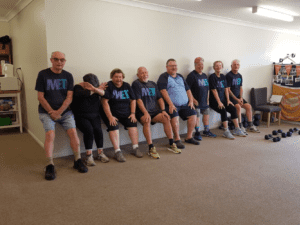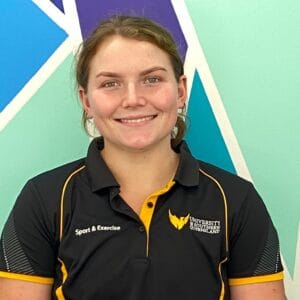What is your anterior cruciate ligament?
The ACL is one of the 4 major ligaments of the knee. Ligaments are connective tissue joining bone to bone. The knee is a hinge joint and requires the PCL (posterior cruciate ligament), ACL (anterior cruciate ligament), MCL (medial collateral ligament) and LCL (lateral collateral ligament) for stability and function. The ACL connects the tibia to the femur and runs diagonally through the middle of the knee. Its role is to prevent the tibia from sliding forward on the femur and provides rotational stability.

Causes
An ACL tear usually occurs in sports that require stopping and changing direction quickly or explosive movements such as jumping and landing. Common sports where ACL tears occur are soccer, skiing, AFL, rugby league and basketball. The majority of ACL tears occur through non-contact mechanisms.
Common mechanisms of injury:
- Cutting
- Pivoting
- Sidestepping
- Sudden deceleration
- Unbalanced landing
Risk factors
- Being female (Possibly due to difference in muscular strength, neuromuscular control, lower extremity alignment and ligamentous laxity.)
- Type of sport
- Muscular imbalance
- Poor conditioning
- Playing surface
- Previous knee injury
Symptoms
- Swelling
- Instability
- Pain especially when weight-bearing
- Loss of range of motion
Diagnosis
Special tests (Anterior drawer test and Lachman’s test) are usually performed prior to undergoing imagery. If the ACL integrity is believed to be compromised an MRI is required to confirm diagnosis.
Nonsurgical Treatment
In some cases, nonsurgical treatment is sufficient to restore the required level of function. This involves intensive exercise therapy under the instruction of a Physiotherapist or Exercise Physiologist.
Surgical Treatment
In most cases, surgical treatment is required. The torn ligament is removed and replaced by a graft made of tendon. The tendon is usually taken from either the hamstring, quadriceps or patella.
Rehab
Rehab should start immediately post-surgery. The goals of rehab include restoring full range of motion, increased knee strength and stability, eliminate bilateral strength differences, decrease pain, increase mobility and confidence. The duration of rehab is very individualised. After 3 months it is expected that the patient can start performing functional exercises. At about month 6, plyometric exercise is often added to rehabs such as jumping, landing, acceleration and deceleration. In terms of an athlete’s full return to play, it often takes 10- 12 months.
Exercise examples include:
- Initial stage: quad sets, glute sets, heel slides
- Middle stage: squats, single-leg squats, resisted knee extension, resisted knee flexion, bridges, clams, crab walks, split squats
- Final stage: hopping, drop landing, drop hops, running




